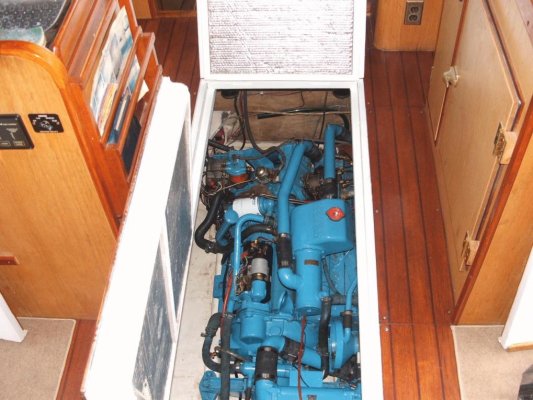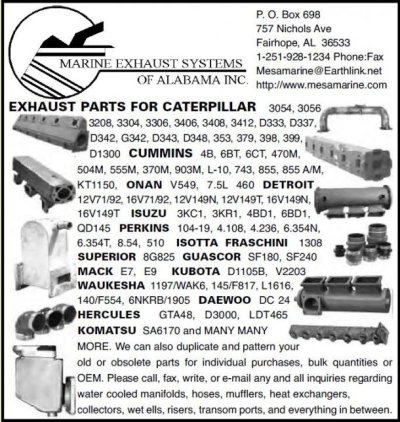I think all of the Perkins 6.354 series have the raw water cooled manifold. What I can say is that my current 6.354(M) does, as did my T 6.354 (MGT).
It does really seems like a silly idea to have hot raw water going through raw metal. I'm surprised they did it this way and no one has improved upon the design. But, there might be reasons w.r.t. cost or metallurgy that I just don't understand.
The thing I can say about the manifolds is that they do seem to last many years to decades in practice, they aren't super expensive, and they are readily available. I'd think they'd rot faster, but when I looked at boats -- many were original or had been replaced only many years earlier and were still working fine. And, in the boat in which I replaced them, they'd lasted 2000+ hours and nearly 40 years. Of course, I did also see boats where they'd rotted out and sure were making a mess!
On my old boat, with the T6.354(MGT) I replaced both manifolds. I think they were about $750.00 each and bolted right on. There is normally easy access to the top of the engine in a boat. No big deal.
As for the intercooler, it is only an issue on the T6.354 (MGT) version of the engine. The design on the 6.354(M) and T6.354(M) don't require the old "breadboxes". And, indeed, these are hugely expensive parts. They list at about $3,500. The good news is that they are readily available -- Orca makes them (maybe among others) and they sell through any number of distributors. The replacement also went in pretty smoothly, it was a good fit in all respects, but there was a lot of plumbing involved.
In my old boat with the T6.354(MGT) engines, I did spend, including mounting hardware and gaskets, about $13k on parts to replace the manifold, heat exchanger, intercooler, header tank, side plate, and oil/trans cooler. This was for two engines and included all the related details.
But, don't let that number scare you. It was the "replace everything associated with salt water, down to the bolts" number. In my case, it wasn't something that was a surprise. Nor was it something that I had to do. I could have replaced the side plates on the intercooler, boiled out the other coolers, and kicked the can down the road for a few more years or more. And, it wasn't a normal situation -- I bought a boat that had been a "slip live aboard" for a decade or so, where there was just enough idling of the engines to keep the salt water inside everything rotting it away. My goal for that boat was to buy a boat with good bones (and bad meat) with the intention of renewing everything and so I did. (I did pumps, injectors, exhaust pipes, fresh and raw water pumps, etc)
It turned out to be a great boat. I learned a TON. Among the thing I learned is that rehabbing a boat is a labor of love. Financially, I'd have been better off buying one in better condition and doing less. But, I learned a ton more about boats doing what I did, so I chalk it up to the high cost of an education.
One thing I learned is to really look at what is there. Some of the parts that came off were total wastage. Others were in need of maintenance but basically still good. Some, very oddly, were brand new. I already had the replacement heat exchanger, header tank, and manifold for the Perkins 4.107 based generator in an online shopping cart when I went to the boat to double check part numbers -- they turned out to be essentially brand new, even after disassembling the heat exchanger and scoping out the manifold and tank. Why? I dunno'. The generator didn't even run due to a controller problem. Perplexing. It must have died the day after the upgrade or something. The problem with the controller -- was one bad resistor.
For Perkins stuff you can get almost anything from the usual suspects:
-- S & W Diesel in Los Angeles [Call (310) 835-3155, they are old school]
-- TAD Diesel in Virginia [
http://www.tadiesels.com/]
-- Foley Engines in Massachussets [
https://www.foleyengines.com/]
--
www.Parts4Engines.com in Britian
--
www.mrcool.us [(866) 726-2665]
For diesel injectors and pumps, almost anyone can do them, but I do recommend the person who did mine and sells a bunch on eBay:
-- Diesel Injection Service in Wilmington, CA [Call Armando, (310) 200-9056]




 If you are able to run around 15 knots the following sea becomes mostly a head sea.
If you are able to run around 15 knots the following sea becomes mostly a head sea.